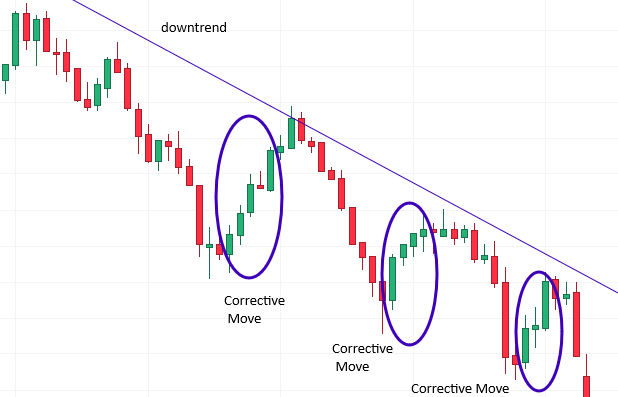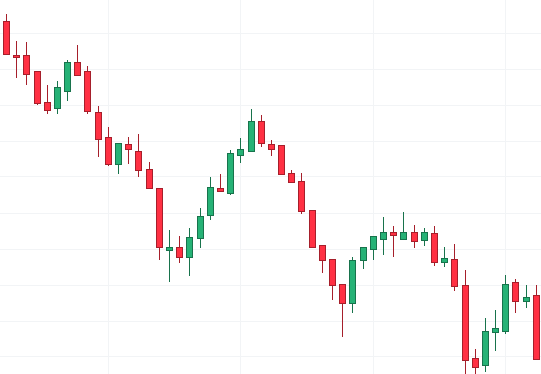In every trending market, there comes a moment when the price pauses and moves in the opposite direction. This phase is known as a corrective move. It’s a natural part of market dynamics that smart traders actively use to their advantage. In this article, we’ll explain what a corrective move is, why it happens, and most importantly – how to profit from it.
What Is a Corrective Move?
A corrective move is a temporary and usually weaker price movement against the main trend. It typically appears after an impulsive move, when the market makes a strong push in one direction.
For example:
- In an uptrend, a corrective move is a short-term drop in price.
- In a downtrend, it’s a short-term rally.
Corrective moves are usually marked by lower volume, lower volatility, and hesitant candles.

What Causes a Corrective Move?
Corrective moves are not random. They occur due to specific market behaviors:
1. Profit-taking
After a strong impulsive move, many traders take profits, causing a counter-move.
2. Liquidity gathering
Markets “pull back” to gather fresh orders. Institutions need liquidity, and corrections offer that opportunity.
3. Market uncertainty
After an aggressive move, the market needs to “breathe.” Traders pause to wait for the next signal.
4. Technical levels
Price often returns to key zones like previous highs/lows, moving averages, or Fibonacci retracement levels.
How to Use Corrective Moves in Trading
Corrective moves are ideal entry points into the main trend. Instead of jumping in during an impulsive move (when risk is high), wait for a correction and enter with better risk-reward ratio.
Step-by-step:
- Identify the trend – Is the market trending up or down?
- Wait for a correction – Look for a temporary move in the opposite direction.
- Look for a reversal signal – Price action patterns (pin bar, engulfing), trendline break, or liquidity zones.
- Enter on confirmation – Don’t guess the end of the correction. Wait for the trend to resume.
- Manage the trade – Use a stop-loss below (or above) the correction structure, and stick to a proper RRR.
Real-life Examples
- Buy the Dip – In an uptrend, wait for a short pullback and go long after confirmation (e.g. around the 50% Fib level).
- Sell the Rally – In a downtrend, wait for a temporary rise and go short near resistance.
Summary
| Feature | Impulsive Move | Corrective Move |
| Direction | With the trend | Against the trend |
| Speed | Fast | Slower |
| Volume | High | Lower |
| Entry signal | After a correction | Sets up entry opportunity |
| Usage | Wait for correction | Enter after confirmation |
Final Thoughts
A corrective move is not a threat – it’s an opportunity. The market never moves in a straight line forever. When you understand corrections, you gain a tactical edge. Be patient, trade with the trend, and let the market come to you.

